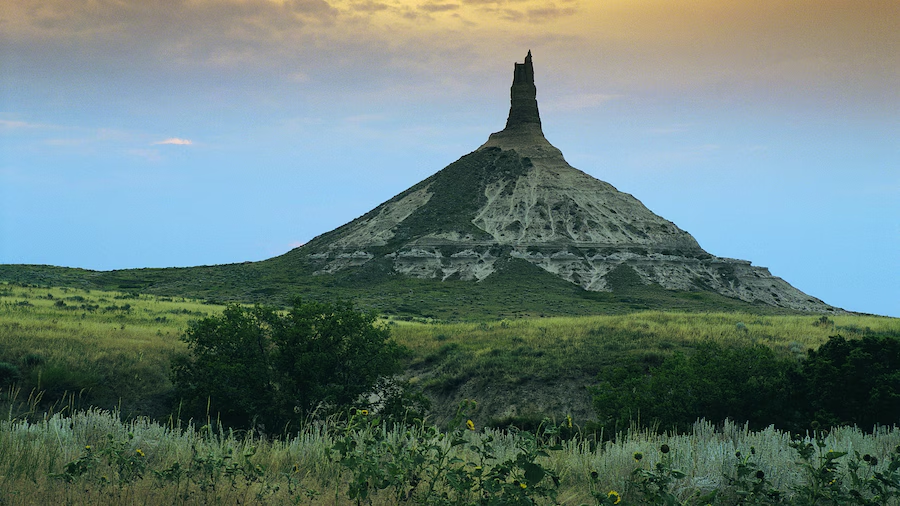Rocky giants pockmark the flat basin of the Scotts Bluff National Monument, named for a dying pioneer abandoned amid these barren bluffs in western Nebraska. The rugged lands of the park presented major obstacles on the trails of westward expansion. Rise to the summits for serene trails and views of the mountains and river valley.
Drive along roads meandering through tumultuous terrain in this 3,000-acre (1,200-hectare) park. Observe awe-inspiring geological formations as you go. Dark and light horizontal lines run along the rocks, revealing their geological history.
At Mitchell Pass gaze up at jagged bluffs. Telegraph poles were set up here in the 1860s between Sentinel Rock and Eagle Rock.
A little southeast stands the Oregon Trail Museum and Visitor Center, created in the 1930s. Learn from the History Room’s exhibits about pioneers who helped build this country. View paintings and sketches in the Jackson Room and displays about the terrain in the Landmark Room. The visitor center also has a gift shop and a theater with a slide presentation.
Travel to the top of the Summit Road for a stunning panorama. You can also ride the shuttle bus and hike down Saddle Rock Trail. Expect a chill at higher climbs. Meet rangers dressed in period costume and discuss westward expansion.
Consider the rich history of this rolling terrain, initially explored by Sioux Indians, who hunted buffalo here. Later, the area became an integral landmark on the Oregon Trail, California Trail and Pony Express.
There is a per-vehicle fee to enter the park, with discounts for motorcyclists, bike riders and walkers. The park is open daily from morning until late afternoon.
The Scotts Bluff National Monument straddles the western edge of Gering in southwestern Nebraska. Drive northeast from Denver for 200 miles (300 kilometers) to get here in about 3 hours.
Make sure to see other parks in the region, such as the Pawnee National Grassland, Nebraska National Forest and Medicine Bow National Forest.













